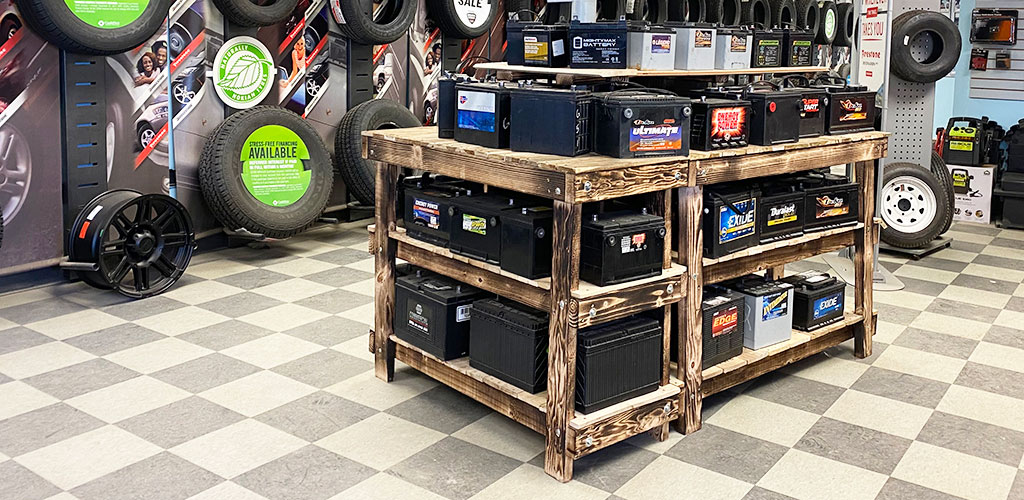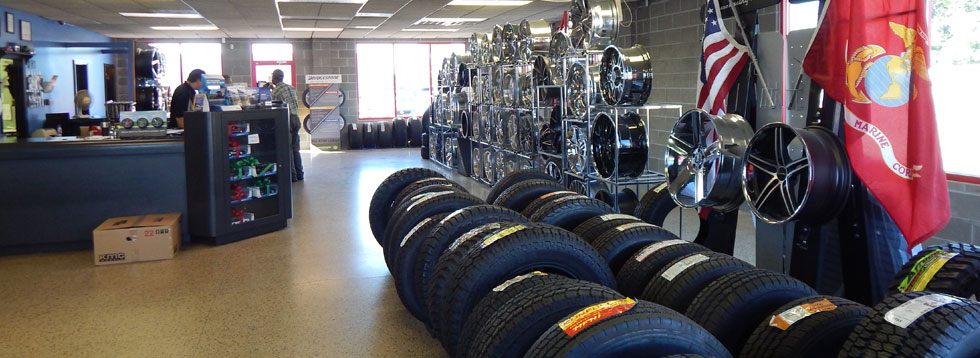The Science Behind Tire Repair Work and Safety And Security
When it concerns the intricate world of tire maintenance and safety, there exists a world of science that usually continues to be unseen by the average chauffeur - morris tire. The materials that make up a tire, the influence of tire pressure on general security, the implications of tread wear, the complex dynamics of tire traction, and the often-overlooked significance of appropriate wheel positioning all play crucial duties in ensuring a lorry runs securely and successfully. As we navigate through the intricacies of tire fixing and safety and security, it comes to be obvious that a much deeper understanding of these scientific principles is not only advantageous however essential for every motorist on the road
Tire Composition and Functionality
What materials make up the composition of tires, and just how do these components add to their capability on the roadway? Steel cords are included to enhance the tire's toughness and assist it preserve its form under different road problems.
The make-up of tires plays a critical function in their performance when driving - morris tire. The rubber substances offer hold and grip, enabling the tire to stick to the road surface and supply security throughout acceleration, stopping, and cornering. The fabric and steel layers add to the tire's ability to stand up to stress, keep its shape, and sustain the automobile's weight. Overall, the cautious option and combination of these products make sure that tires can perform efficiently and securely on numerous roadway surface areas and conditions.
Influence of Tire Pressure on Safety
On the other hand, overinflated tires have less contact with the roadway surface area, lowering grip and creating unequal wear on the tire treads. Correctly filled with air tires likewise play a critical function in gas efficiency, as underinflated tires can enhance rolling resistance, leading to decreased gas mileage. On a regular basis inspecting and maintaining the right tire stress not just guarantees safety and security however likewise expands the lifespan of the tires, saving on replacement costs in the long run.
Tread Put On and Its Ramifications
Proper monitoring of tire step wear is crucial for guaranteeing optimal performance and safety and security when driving. As tires put on down, the depth of the walk reduces, decreasing the tire's capacity to preserve traction, specifically in damp or unsafe conditions. The tread pattern and deepness play an essential function in funneling water far from the tire to stop hydroplaning and keeping hold when driving surface.
Irregular wear might recommend problems with tire inflation, placement, or suspension components. Put on indicators are constructed into the tire step and become visible when the step deepness reaches a specific low factor, suggesting the requirement for prompt replacement.

Recognizing Tire Grip Dynamics
Keeping track of tire tread wear not just guarantees optimum efficiency and security but also directly affects the grip dynamics of the tires on different road surface areas. Tire traction is look at this website an essential aspect of car handling and security, as it determines the hold between the tires and the roadway. Grip characteristics vary depending upon road conditions such as completely dry pavement, damp roads, snow, or ice.

Comprehending tire traction characteristics is important for drivers to adapt their driving behavior according to the roadway conditions. morris tire. Regularly checking tire tread depth and problem can significantly boost grip performance, ensuring safer driving experiences throughout numerous surfaces
Value of Appropriate Wheel Placement
Making sure correct wheel positioning plays a vital role in optimizing vehicle efficiency and expanding tire longevity. Proper wheel positioning involves changing the angles of the wheels to manufacturer specs, making certain that they are vertical to the ground and parallel to each other. When positioning is off, it can cause irregular tire wear, lowered gas efficiency, and endangered handling.
One of the essential advantages of maintaining appropriate wheel placement is improved managing and stability. Misaligned wheels can cause the automobile to draw away, influencing steering control and total driving experience. Additionally, correct alignment promotes even tire wear, preventing early tire substitute and reducing maintenance expenses in the lengthy run.

Conclusion
In conclusion, the scientific research behind tire fixing and safety and security is vital for keeping car efficiency and making sure motorist safety and security. By understanding tire composition, stress, walk wear, traction dynamics, and wheel alignment, drivers can avoid accidents and extend the life expectancy of their tires.
The materials that make up a tire, the effect of tire stress on overall security, the effects of walk wear, the intricate dynamics of tire grip, and the often-overlooked importance of appropriate wheel placement all play important duties in ensuring a car operates securely and successfully. On the various other hand, overinflated tires have less contact with the road surface, lowering traction and causing uneven see this wear on the tire footsteps. Frequently examining and keeping the correct tire stress not my company just makes sure safety and security but also prolongs the life expectancy of the tires, conserving on substitute costs in the long run.
Keeping track of tire tread wear not only makes sure optimal performance and safety and security but likewise straight impacts the traction characteristics of the tires on different roadway surface areas. Tire grip is a vital element of lorry handling and safety, as it establishes the grasp between the tires and the roadway.